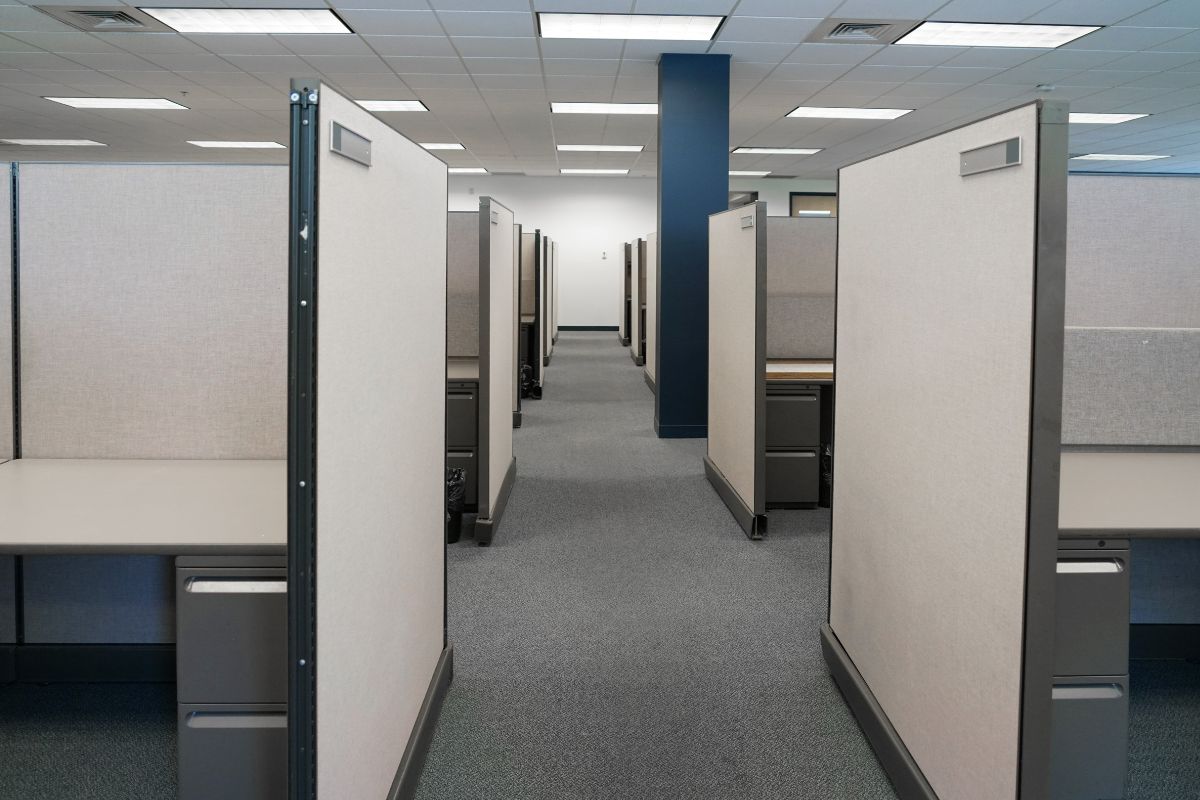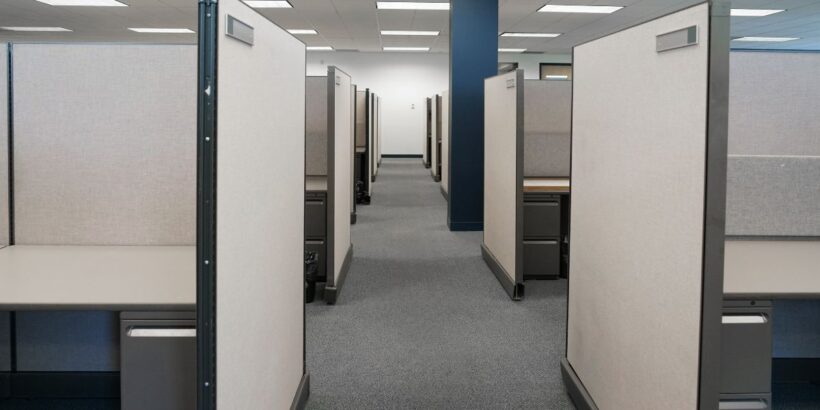
With its pushpin-filled partitions and neutral grey surfaces, the iconic office cubicle has been a staple in the corporate world for decades. The cubicle arose in the late 1960s as a way to optimize office space and provide employees with a “personal” workspace. But nowadays, many companies are looking to replace these drab and isolating spaces with more open and collaborative workspace options. What changed? How did the cubicle become so unpopular? We’ll explore its history, track its downfall, and look at the alternatives to the infamous “cube farm.”
Limitations on Creativity
Management likes to talk about “de-siloing” departments and “breaking down walls.” That goes from the figurative to the literal when it comes to office design. One of the biggest criticisms of cubicles is how they limit collaboration and creativity. Rigid, compartmentalized workspaces don’t give employees the opportunity to share ideas and get feedback in real-time or collaborate in any meaningful sense. The cubicle layout, with its walls and partitions, imposes a level of sameness on every employee, hindering their imaginative thinking. Studies show that creativity flows when people can interact with their peers or work in teams.
Physical and Mental Health Concerns
We call the white-collar world “the rat race,” and cubicles were its cages. Many people complain about the physical discomforts that come with being confined in a small cubicle all day. Lack of natural light, inadequate ventilation, poor acoustics, and constant noise all contribute to a stressful work environment that can take a toll on employees’ mental health. In fact, being trapped in a cubicle can cause what’s known as “sick building syndrome,” characterized by headaches, dry eyes, fatigue, and respiratory problems.
Uninspiring Work Culture
In 1967, office furniture designer Robert Propst rolled out Active Office II: the modern cubicle. The attempt to optimize office space would be undone by—well, Office Space. Mike Judge’s 1999 cult classic changed the way we saw white-collar work, highlighting the dull aspects of cubicle life. The lack of personalization in a cubicle harms employees’ sense of belonging, which can lead to disengagement, lower productivity, and high turnover rates. Companies that neglect their employees’ well-being will pay dearly in the long run. They will struggle to recruit and retain high-quality talent and may find themselves becoming irrelevant to younger workers, who value transparency and co-creation.
The Need for Versatility and Collaboration
Lastly, the physical layout and space of cubicles are too static compared to the modern demands of work. With agile work coming to the forefront, companies are shifting toward new approaches to office layouts: flexible, adaptable, and multi-functional workspaces that enable their teams to change the scenery and work together or solo, depending upon their task at the moment. Coworking spaces or hot desks, open-plan offices, and the latest meeting rooms and conferencing software are all part of this approach as the cubicle becomes more unpopular.
Innovative thinkers are challenging the static norm of cubicles with fresh approaches that give a sense of solidarity, cater to diverse personalities and work styles, and inspire teams to co-create. It’s time to create workspaces that are flexible, dynamic, and collaborative. Taking these steps can help organizations attract top talent, foster a healthy work environment, and stay ahead of the curve.
